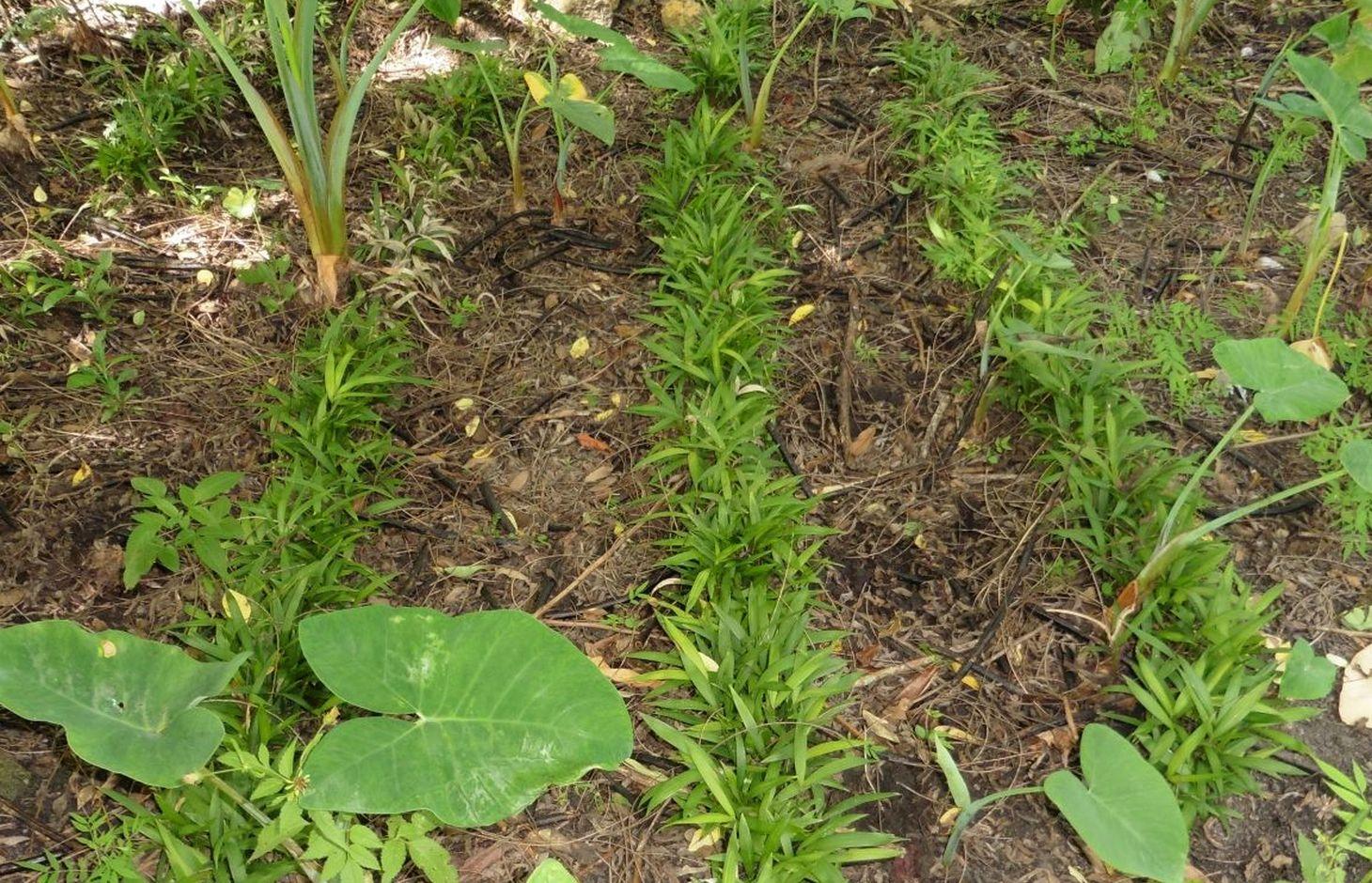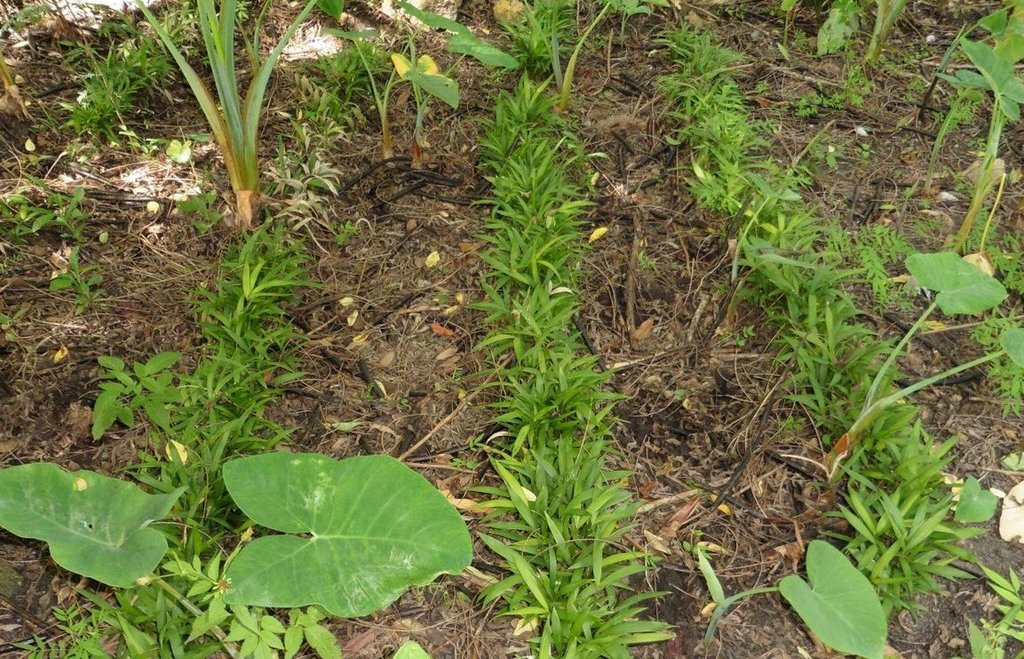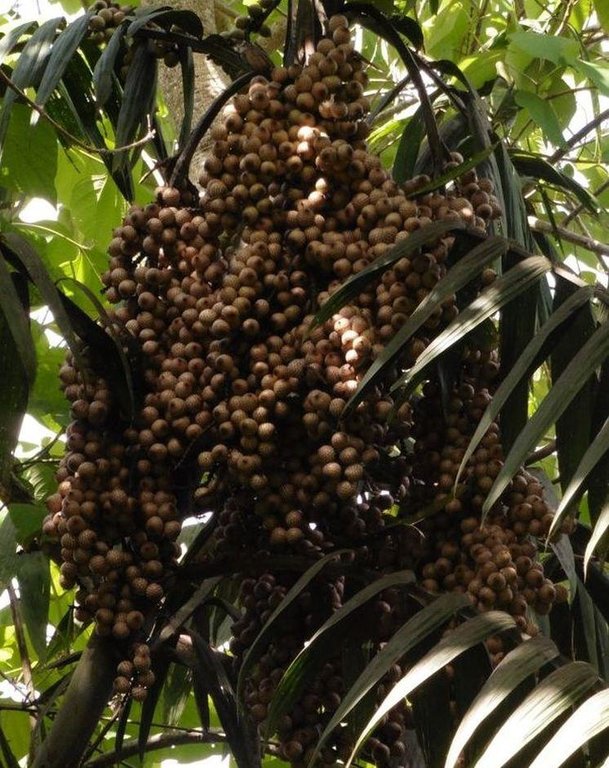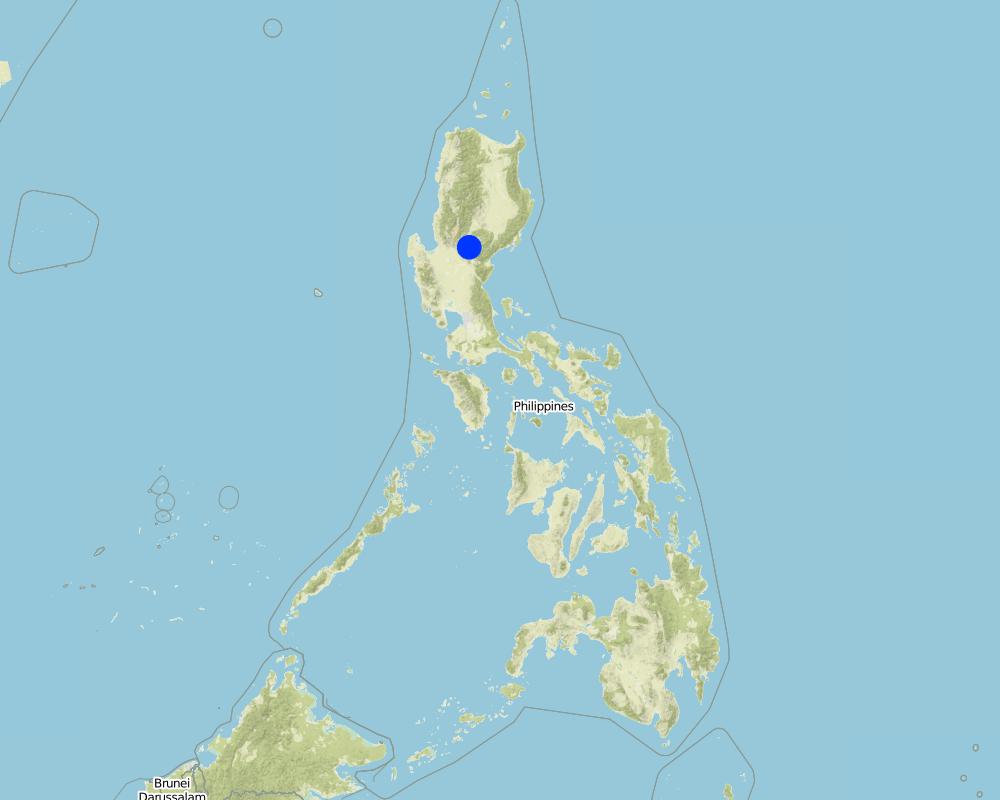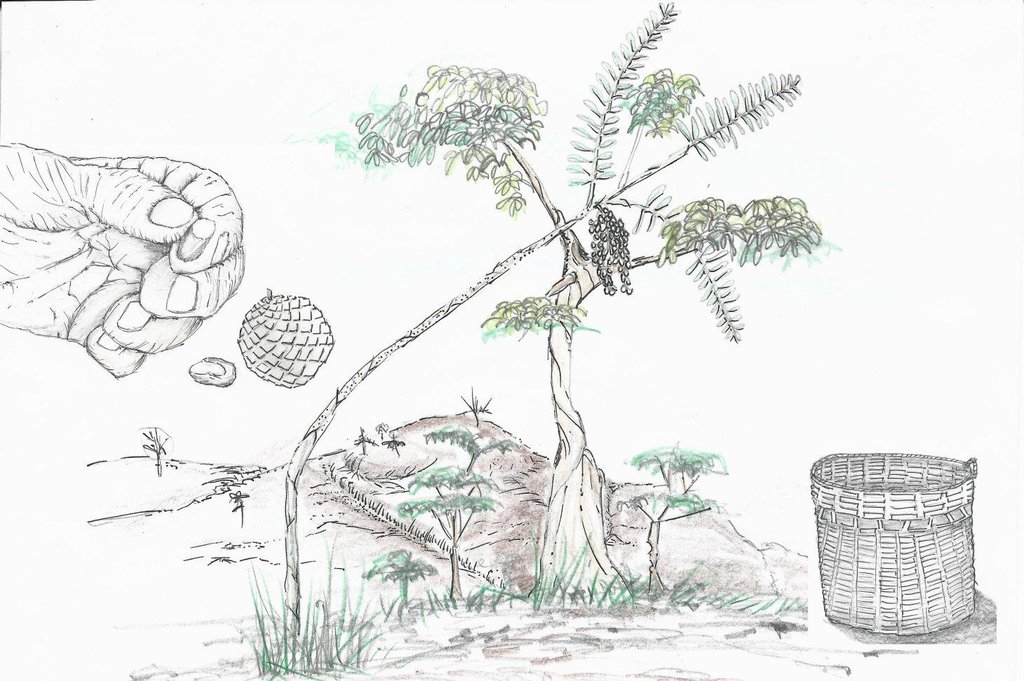Littuko Growing for Forest Enhancement [Philippines]
- Création :
- Mise à jour :
- Compilateur : Philippine Overview of Conservation Approaches and Technologies
- Rédacteur : –
- Examinateurs : David Streiff, Alexandra Gavilano
technologies_1708 - Philippines
Voir les sections
Développer tout Réduire tout1. Informations générales
1.2 Coordonnées des personnes-ressources et des institutions impliquées dans l'évaluation et la documentation de la Technologie
Personne(s)-ressource(s) clé(s)
Spécialiste GDT:
Dacumos Evangeline
Department of Agriculture-Bureau of Soils and Water Management
Philippines
Spécialiste GDT:
Dinamling Djolly Ma.
Department of Agriculture-Bureau of Soils and Water Management
Spécialiste GDT:
Espanto Patrick Benson
Department of Agriculture-Bureau of Soils and Water Management
Philippines
Mento Dopinio
Spécialiste GDT:
Nom du ou des institutions qui ont facilité la documentation/ l'évaluation de la Technologie (si pertinent)
Bureau of Soils and Water Management (Bureau of Soils and Water Management) - PhilippinesNom du ou des institutions qui ont facilité la documentation/ l'évaluation de la Technologie (si pertinent)
Forest Management Bureau (Forest Management Bureau) - Philippines1.3 Conditions relatives à l'utilisation par WOCAT des données documentées
Le compilateur et la(les) personne(s) ressource(s) acceptent les conditions relatives à l'utilisation par WOCAT des données documentées:
Oui
1.5 Référence au(x) Questionnaires sur les Approches de GDT (documentées au moyen de WOCAT)
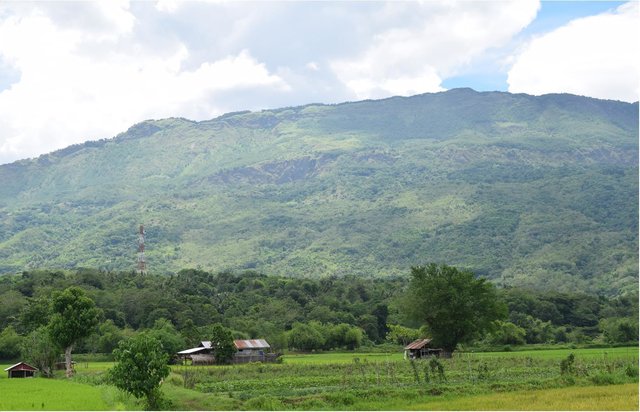
Community-Based Forest Management [Philippines]
Community-Based Forest Management (CBFM) refers to the organized efforts to work with communities in and near public forestlands with the intent to protect, rehabilitate, manage, conserve, and utilize the resources in partnership with the Local Government Units (LGUs) and other stakeholders.
- Compilateur : Isabelita Austria
2. Description de la Technologie de GDT
2.1 Courte description de la Technologie
Définition de la Technologie:
Growing of rattan is done by upland farmers as part of the Community-Based Forest Management (CBFM).
2.2 Description détaillée de la Technologie
Description:
Littuko (Calamus manilensis) is a large rattan variety belonging to the climbing-palm family Arecaceae which is commonly found in the Cordillera, Caraballo, and Sierra Madre mountain ranges. It matures in seven years and bears 50 to 70 kilos of fruits each year. Its fruits are sweetish sour when ripe and are gathered around April to September.
Purpose of the Technology: The littuko provides green cover to the trees even in the dry months and in case of wildfire,they reinforce the forest's capacity to serve as firebreaks or greenbreaks. It also attract a lot of wildlife ranging from insects (bees, fire flies, and beetles) to birds, bats, and cloud rats. Forests with littuko become equipped with natural guards since the littuko's spines with sturdy thorns discourage people and stray animals to freely enter the forest area and disturb the ecosystem.Conservation of trees is also promoted on this technology.
Establishment / maintenance activities and inputs: For the cultivation of littuko, the following procedures are done: (1) Before planting into a seedbed or polyethylene bags (plastic planting bag), the hilar cover of the littuko seed is gently scraped with the use of a sharp knife. Removing the hilar cover enables the tiny plant to easily break out of the seed. (2) The sprout is transplanted to the designated area under the host tree when it reaches six inches in height and with at least three leaves. The chosen host tree is where the littuko can cling on for support to prevent lodging or breakage of stems. (3) Within one to three years, ring weeding is done around the littuko plant. (4) Maintenance and inputs are needed after three years to ensure its growth.
Natural / human environment: Littuko grows underneath of growing trees in the natural forest. They grow best in rainforests and no cultivation is needed.The area is under a humid agro climate with an average annual rainfall of 2000-3000 mm per year. Land users have an average holding of 0.5-1 hectare for the forestlands or woodlands.Most of them are stewards of the forest through the Community Based Forest Management Agreement (CBFMA) for 25 years and renewable for another 25 years.
2.3 Photos de la Technologie
2.5 Pays/ région/ lieux où la Technologie a été appliquée et qui sont couverts par cette évaluation
Pays:
Philippines
Région/ Etat/ Province:
Bayombong
Autres spécifications du lieu:
Nueva Vizcaya
Spécifiez la diffusion de la Technologie:
- répartie uniformément sur une zone
S'il n'existe pas d'informations exactes sur la superficie, indiquez les limites approximatives de la zone couverte:
- 0,1-1 km2
Commentaires:
The area for the propagation of rattan is part of the Community Based Forest Management (CBFM).
Map
×2.6 Date de mise en œuvre de la Technologie
Si l'année précise est inconnue, indiquez la date approximative: :
- il y a entre 10-50 ans
2.7 Introduction de la Technologie
Spécifiez comment la Technologie a été introduite: :
- grâce à l'innovation d'exploitants des terres
Commentaires (type de projet, etc.) :
In 1984, 100 littuko seeds were planted by the land users and 70% are male plants.
3. Classification de la Technologie de GDT
3.2 Type(s) actuel(s) d'utilisation des terres, là où la Technologie est appliquée

Forêts/ bois
- Forêts (semi-)naturelles/ bois
- Plantations d'arbres, boisements
Forêts (semi-)naturelles/ terres boisées: précisez le mode de gestion:
- Coupes sélectives
- Utilisation de la forêt non liée au bois
Plantation d'arbres, afforestation: Précisez l'origine et la composition des espèces. :
- Variétés mixtes
Produits et services:
- Bois d'œuvre (de construction)
- Autres produits forestiers
- Conservation/ protection de la nature
Commentaires:
Major land use problems (compiler’s opinion): Logging, charcoal making and grazing since it was initially a grassland
Selective felling of (semi-) natural forests: Yes
Plantation forestry: Yes
Forest products and services: timber, other forest products / uses (honey, medical, etc.), nature conservation / protection
Future (final) land use (after implementation of SLM Technology): Forests / woodlands: Fo: Other
Number of growing seasons per year: 1
Longest growing period from month to month: perennial
3.3 Est-ce que l’utilisation des terres a changé en raison de la mise en œuvre de la Technologie ?
Est-ce que l’utilisation des terres a changé en raison de la mise en œuvre de la Technologie ?
- Oui (Veuillez remplir les questions ci-après au regard de l’utilisation des terres avant la mise en œuvre de la Technologie)

Pâturages
- Extensive grazing
3.5 Groupe de GDT auquel appartient la Technologie
- gestion des forêts naturelles et semi-naturelles
3.6 Mesures de GDT constituant la Technologie

pratiques végétales
- V5: Autres
Commentaires:
Main measures: vegetative measures
Specification of other vegetative measures: Involve the use of vines
Type of vegetative measures: scattered / dispersed
3.7 Principaux types de dégradation des terres traités par la Technologie

érosion hydrique des sols
- Wt: perte de la couche superficielle des sols (couche arable)/ érosion de surface

dégradation chimique des sols
- Cn: baisse de la fertilité des sols et réduction du niveau de matière organique (non causée par l’érosion)

dégradation physique des sols
- Pc: compaction

dégradation biologique
- Bc: réduction de la couverture végétale
- Bh: perte d’habitats
- Bq: baisse de la quantité/ biomasse
Commentaires:
Main type of degradation addressed: Bc: reduction of vegetation cover, Bh: loss of habitats, Bq: quantity / biomass decline
Secondary types of degradation addressed: Wt: loss of topsoil / surface erosion, Cn: fertility decline and reduced organic matter content, Pc: compaction
Main causes of degradation: deforestation / removal of natural vegetation (incl. forest fires) (Cutting of trees), land tenure (Insecurity (open access))
Secondary causes of degradation: crop management (annual, perennial, tree/shrub) (More on annual crops), overgrazing (Cattle raising), change in temperature, droughts, population pressure (Increase of population that leads to the increase of cutting of trees.)
3.8 Prévention, réduction de la dégradation ou réhabilitation des terres dégradées
Spécifiez l'objectif de la Technologie au regard de la dégradation des terres:
- restaurer/ réhabiliter des terres sévèrement dégradées
Commentaires:
Main goals: rehabilitation / reclamation of denuded land
4. Spécifications techniques, activités, intrants et coûts de mise en œuvre
4.1 Dessin technique de la Technologie
Spécifications techniques (associées au dessin technique):
Rattan vine planted in the forest with rattan made basket used in transporting littuko seeds in the market.On top is the scarification of the littuko seed to induce seed growth.
Location: Brgy. Buenavista. Bayombong, Nueva Vizcaya
Date: June 25,2015
Technical knowledge required for land users: high (Need skills in seed propagation and use of scarification of seeds.)
Main technical functions: promotion of vegetation species and varieties (quality, eg palatable fodder), Conservation of trees which serve as host or anchor trees
Secondary technical functions: control of raindrop splash, increase in organic matter, increase of biomass (quantity), Control weeds
Scattered / dispersed
Vegetative material: O : other
Number of plants per (ha): 1000
Other species: Vine (rattan)
Auteur:
Patricio A. Yambot, Bureau of Soils and Water Management
4.2 Informations générales sur le calcul des intrants et des coûts
autre/ monnaie nationale (précisez):
Pesos
Indiquez le taux de change des USD en devise locale, le cas échéant (p.ex. 1 USD = 79.9 réal brésilien): 1 USD = :
45,0
Indiquez le coût salarial moyen de la main d'œuvre par jour:
3.33
4.3 Activités de mise en place/ d'établissement
| Activité | Calendrier des activités (saisonnier) | |
|---|---|---|
| 1. | Nursery establishment through seed bed | Before the onset of rainy seasons |
| 2. | Transplanting | After 8-12 months of seeding |
4.4 Coûts et intrants nécessaires à la mise en place
| Spécifiez les intrants | Unité | Quantité | Coûts par unité | Coût total par intrant | % du coût supporté par les exploitants des terres | |
|---|---|---|---|---|---|---|
| Main d'œuvre | Labour for nursery | Person/day | 1,0 | 3,3333 | 3,33 | 100,0 |
| Main d'œuvre | Transplanting | Person/day | 1,0 | 3,3333 | 3,33 | 1000,0 |
| Matériel végétal | Seedling | Seeds | 1000,0 | 0,22222 | 222,22 | 100,0 |
| Coût total de mise en place de la Technologie | 228,88 | |||||
| Coût total de mise en place de la Technologie en dollars américains (USD) | 5,09 | |||||
4.5 Activités d'entretien/ récurrentes
| Activité | Calendrier/ fréquence | |
|---|---|---|
| 1. | Weeding | Once a week for 2 years (maybe done once a month) |
| 2. | Harvesting | After 5-8 years of planting |
4.6 Coûts et intrants nécessaires aux activités d'entretien/ récurrentes (par an)
| Spécifiez les intrants | Unité | Quantité | Coûts par unité | Coût total par intrant | % du coût supporté par les exploitants des terres | |
|---|---|---|---|---|---|---|
| Main d'œuvre | Weeding | Person/day | 2,0 | 3,333 | 6,67 | 100,0 |
| Main d'œuvre | Harvesting | Person/day | 4,0 | 3,333 | 13,33 | 100,0 |
| Coût total d'entretien de la Technologie | 20,0 | |||||
| Coût total d'entretien de la Technologie en dollars américains (USD) | 0,44 | |||||
5. Environnement naturel et humain
5.1 Climat
Précipitations annuelles
- < 250 mm
- 251-500 mm
- 501-750 mm
- 751-1000 mm
- 1001-1500 mm
- 1501-2000 mm
- 2001-3000 mm
- 3001-4000 mm
- > 4000 mm
Zone agro-climatique
- humide
Thermal climate class: tropics
5.2 Topographie
Pentes moyennes:
- plat (0-2 %)
- faible (3-5%)
- modéré (6-10%)
- onduleux (11-15%)
- vallonné (16-30%)
- raide (31-60%)
- très raide (>60%)
Reliefs:
- plateaux/ plaines
- crêtes
- flancs/ pentes de montagne
- flancs/ pentes de colline
- piémonts/ glacis (bas de pente)
- fonds de vallée/bas-fonds
Zones altitudinales:
- 0-100 m
- 101-500 m
- 501-1000 m
- 1001-1500 m
- 1501-2000 m
- 2001-2500 m
- 2501-3000 m
- 3001-4000 m
- > 4000 m
Indiquez si la Technologie est spécifiquement appliquée dans des:
- non pertinent
5.3 Sols
Profondeur moyenne du sol:
- très superficiel (0-20 cm)
- superficiel (21-50 cm)
- modérément profond (51-80 cm)
- profond (81-120 cm)
- très profond (>120 cm)
Texture du sol (de la couche arable):
- moyen (limoneux)
Matière organique de la couche arable:
- moyen (1-3%)
5.4 Disponibilité et qualité de l'eau
Profondeur estimée de l’eau dans le sol:
en surface
Disponibilité de l’eau de surface:
bonne
Qualité de l’eau (non traitée):
eau potable
5.5 Biodiversité
Diversité des espèces:
- moyenne
5.6 Caractéristiques des exploitants des terres appliquant la Technologie
Orientation du système de production:
- exploitation mixte (de subsistance/ commerciale)
Revenus hors exploitation:
- moins de 10% de tous les revenus
Niveau relatif de richesse:
- pauvre
- moyen
Individus ou groupes:
- individu/ ménage
Genre:
- femmes
- hommes
Indiquez toute autre caractéristique pertinente des exploitants des terres:
Land users applying the Technology are mainly common / average land users
Population density: 10-50 persons/km2
75% of the land users are average wealthy and own 75% of the land.
25% of the land users are poor and own 25% of the land.
5.7 Superficie moyenne des terres utilisées par les exploitants des terres appliquant la Technologie
- < 0,5 ha
- 0,5-1 ha
- 1-2 ha
- 2-5 ha
- 5-15 ha
- 15-50 ha
- 50-100 ha
- 100-500 ha
- 500-1 000 ha
- 1 000-10 000 ha
- > 10 000 ha
Cette superficie est-elle considérée comme de petite, moyenne ou grande dimension (en se référant au contexte local)?
- petite dimension
Commentaires:
Just woodland, no crop or grazing land
5.8 Propriété foncière, droits d’utilisation des terres et de l'eau
Propriété foncière:
- état
Droits d’utilisation des terres:
- communautaire (organisé)
Droits d’utilisation de l’eau:
- communautaire (organisé)
Commentaires:
CBFM Agreement, Certificate of Stewardship Contract of 10-25 years
5.9 Accès aux services et aux infrastructures
santé:
- pauvre
- modéré
- bonne
éducation:
- pauvre
- modéré
- bonne
assistance technique:
- pauvre
- modéré
- bonne
emploi (par ex. hors exploitation):
- pauvre
- modéré
- bonne
marchés:
- pauvre
- modéré
- bonne
énergie:
- pauvre
- modéré
- bonne
routes et transports:
- pauvre
- modéré
- bonne
eau potable et assainissement:
- pauvre
- modéré
- bonne
services financiers:
- pauvre
- modéré
- bonne
6. Impacts et conclusions
6.1 Impacts sur site que la Technologie a montrés
Impacts socio-économiques
Production
production agricole
production de bois
risque d'échec de la production
Disponibilité et qualité de l'eau
disponibilité de l'eau potable
disponibilité de l'eau pour l'élevage
qualité de l'eau pour l'élevage
Revenus et coûts
revenus agricoles
diversité des sources de revenus
Autres impacts socio-économiques
Difficulty to harvest
Commentaires/ spécifiez:
Difficult to harvest since host tree is tall
Impacts socioculturels
sécurité alimentaire/ autosuffisance
opportunités culturelles
institutions communautaires
apaisement des conflits
Improved livelihood and human well-being
Commentaires/ spécifiez:
The littuko fruits provide additional income to community based forest management implementer/participants.
Impacts écologiques
Sols
matière organique du sol/ au dessous du sol C
Biodiversité: végétale, animale
diversité végétale
espèces bénéfiques
diversité des habitats
Réduction des risques de catastrophe et des risques climatiques
émissions de carbone et de gaz à effet de serre
Autres impacts écologiques
Conservation of trees
Commentaires/ spécifiez:
Conservation of trees is promoted because trees serve as hosts for the growing of rattan
6.3 Exposition et sensibilité de la Technologie aux changements progressifs et aux évènements extrêmes/catastrophes liés au climat (telles que perçues par les exploitants des terres)
Changements climatiques progressifs
Changements climatiques progressifs
| Saison | Augmentation ou diminution | Comment la Technologie fait-elle face à cela? | |
|---|---|---|---|
| températures annuelles | augmente | bien |
Extrêmes climatiques (catastrophes)
Catastrophes météorologiques
| Comment la Technologie fait-elle face à cela? | |
|---|---|
| pluie torrentielle locale | bien |
Catastrophes climatiques
| Comment la Technologie fait-elle face à cela? | |
|---|---|
| sécheresse | pas bien |
Catastrophes hydrologiques
| Comment la Technologie fait-elle face à cela? | |
|---|---|
| inondation générale (rivière) | pas connu |
6.4 Analyse coûts-bénéfices
Quels sont les bénéfices comparativement aux coûts de mise en place (du point de vue des exploitants des terres)?
Rentabilité à court terme:
légèrement positive
Rentabilité à long terme:
très positive
Quels sont les bénéfices comparativement aux coûts d'entretien récurrents (du point de vue des exploitants des terres)?
Rentabilité à court terme:
légèrement positive
Rentabilité à long terme:
très positive
6.5 Adoption de la Technologie
- > 50%
Si disponible, quantifiez (nombre de ménages et/ou superficie couverte):
200 households and 70 percent of land
De tous ceux qui ont adopté la Technologie, combien d'entre eux l'ont fait spontanément, à savoir sans recevoir aucune incitation matérielle, ou aucune rémunération? :
- 0-10%
Commentaires:
100% of land user families have adopted the Technology with external material support
200 land user families have adopted the Technology with external material support
There is a strong trend towards spontaneous adoption of the Technology
Comments on adoption trend: Land users are adopting the technology since littuko seedlings nursery are established for the propagation of planting of rattan in the village and its neighboring area.
6.7 Points forts/ avantages/ possibilités de la Technologie
| Points forts/ avantages/ possibilités du point de vue de l'exploitant des terres |
|---|
|
Littuko vine is multi-purpose. Its fruits are used for food consumption while its poles are used as handicrafts/furniture. How can they be sustained / enhanced? Provision of technical assistance in the development of product using rattan as the raw material. |
| Points forts/ avantages/ possibilités du point de vue du compilateur ou d'une autre personne ressource clé |
|---|
|
Littuko fruit is not perishable. It could be stored for a period of time under normal conditions. This could be used as condiments and ornaments. How can they be sustained / enhanced? Providing assistance in processing the littuko fruits such as creating jams, candies and others using the fruit. In this way, the marketability and market value of the product will be increased. |
| Low maintenance as a crop. Contributory to trees and it helps in the reduction of soil erosion. |
6.8 Faiblesses/ inconvénients/ risques de la Technologie et moyens de les surmonter
| Faiblesses/ inconvénients/ risques du point de vue du compilateur ou d'une autre personne ressource clé | Comment peuvent-ils être surmontés? |
|---|---|
| Difficult to harvest since the host tree is tall.It does not grow in open areas and does not stand alone. | Development of a tool that could be used in harvesting the fruit and planting of trees as pole stand to avoid lodging or breakage of littuko vine. |
7. Références et liens
7.1 Méthodes/ sources d'information
Liens et modules
Développer tout Réduire toutLiens

Community-Based Forest Management [Philippines]
Community-Based Forest Management (CBFM) refers to the organized efforts to work with communities in and near public forestlands with the intent to protect, rehabilitate, manage, conserve, and utilize the resources in partnership with the Local Government Units (LGUs) and other stakeholders.
- Compilateur : Isabelita Austria
Modules
Aucun module trouvé


